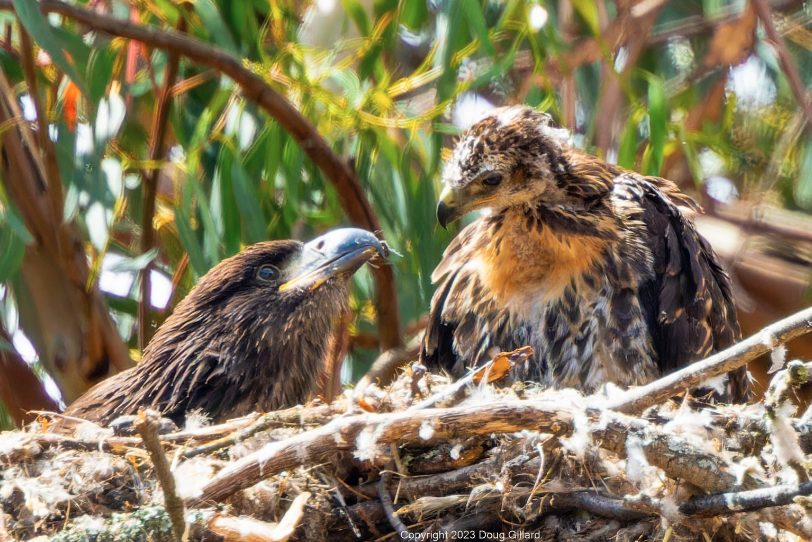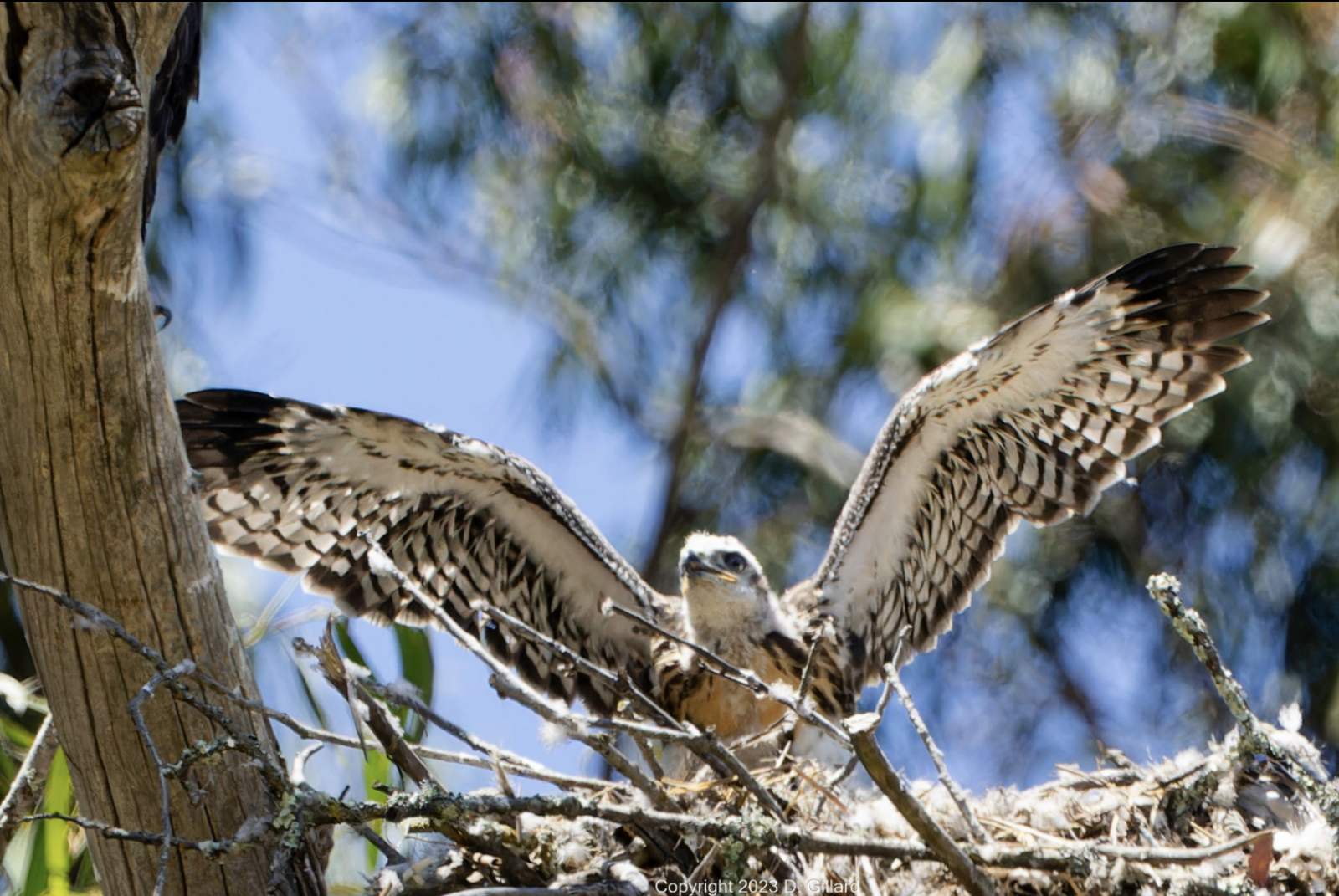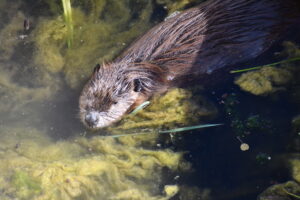The female bald eagle arrived suddenly, swooping low over wildlife photographer Doug Gillard, just as he was on his way back to his car from five hours of watching the nest in mid-May. In her talons, she clutched a fuzzy, light-gray baby bird—alive.
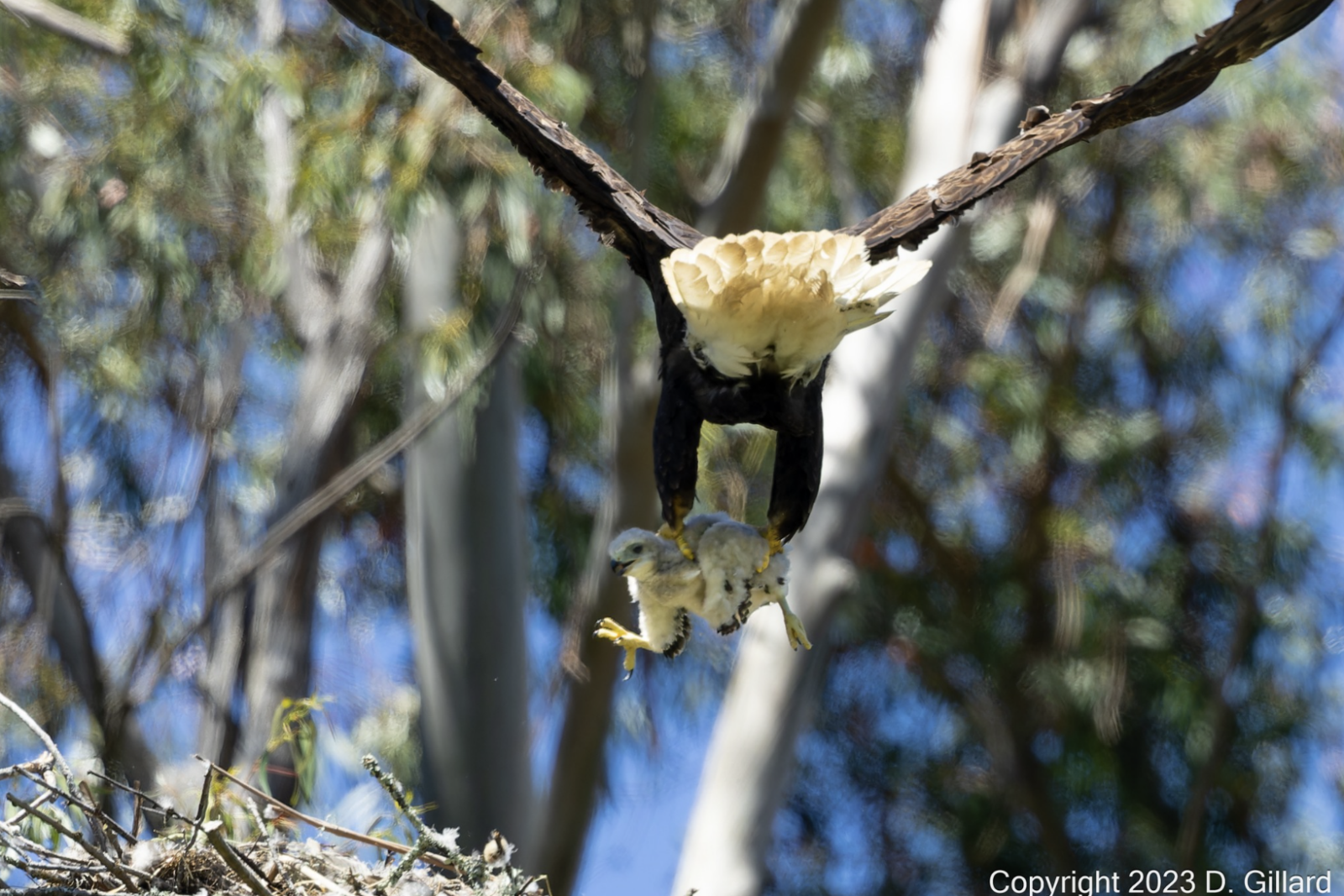
Dinner for the much larger young eaglet, Gillard assumed. He’d been shooting the nest since January, mostly by himself, watching “Lola,” as he nicknamed it (after his granddaughter), hatch and grow. “Nature can be cruel!” he wrote in a May 20 post to a Facebook group of birders, posting pictures of the eagle flying with what turned out to be a red-tailed hawk. “I’ve heard that BEs [bald eagles] will rob nests to feed their young, but this is the first time I’ve photographed it.” (Gillard was well-equipped; he runs a camera-review YouTube channel called “Let’s Go Birding.”)

When Gillard came back a week later, he saw “just a little tiny head poking out” over the nest. The eyas (the term for a baby hawk) was still alive. He nicknamed it “Tuffy,” given the ordeal it had survived. Gillard’s video shows the bald eagle parent feeding the chick.
“A week later, another little white flash caught my eye,” Gillard says. A second eyas.
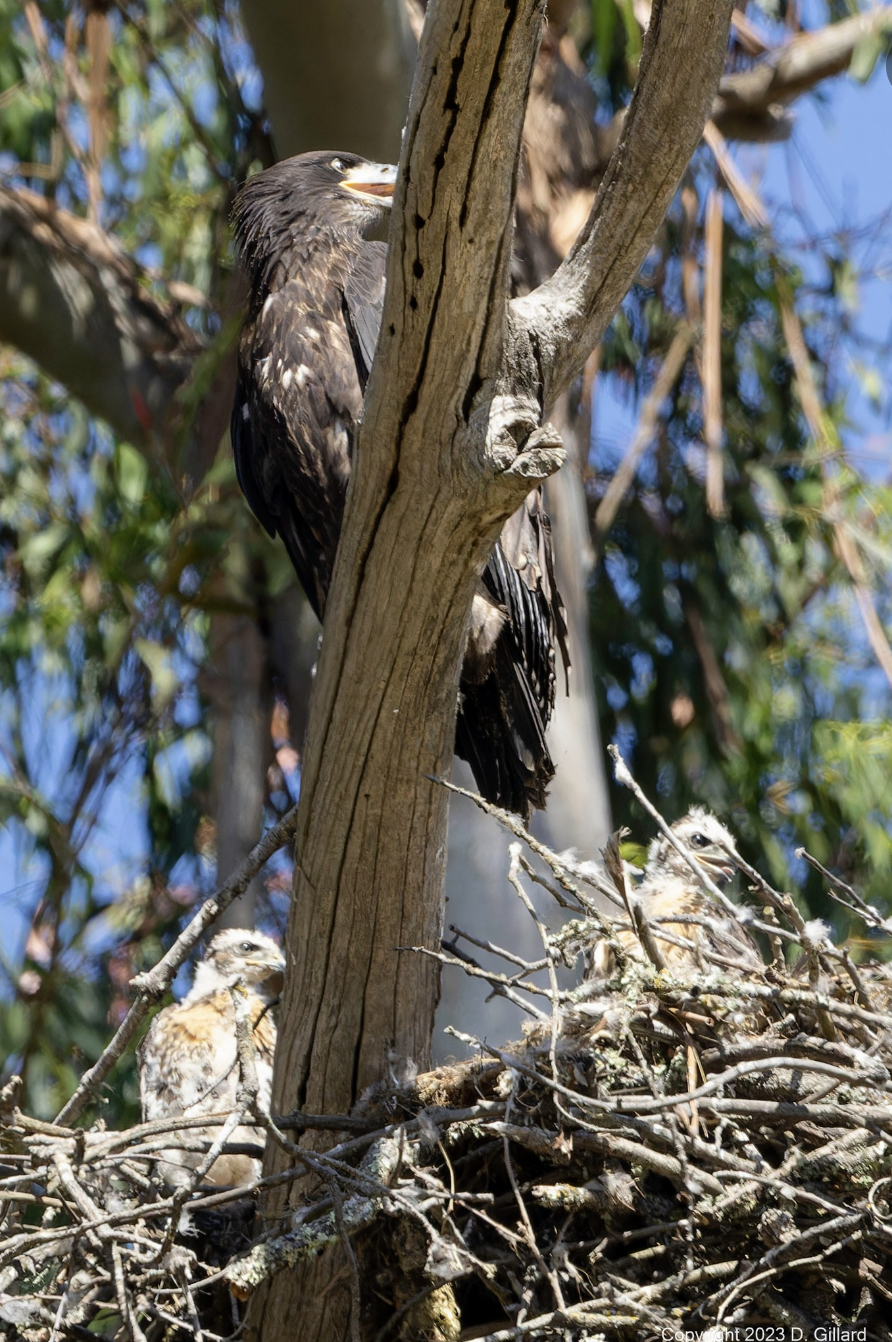
“I think you can definitely call this confirmed,” wrote Katie LaBarbera of the San Francisco Bay Bird Observatory, noting how thoroughly Gillard had documented the situation. Normally, hawks and eagles don’t mix. Yet eagles have been known to raise red-tailed hawks occasionally (plus at least one glaucous-winged gull chick, in the Aleutian Islands). Academic papers are few on such interspecific adoptions; one 1993 Journal of Raptor Research paper noted that 3 of 662 eagle pairs raised mixed broods in observations over 1987–1991. A National Geographic video from 2015 shows a hawk raised by eagles that grew up to act, in some ways, like an eagle.
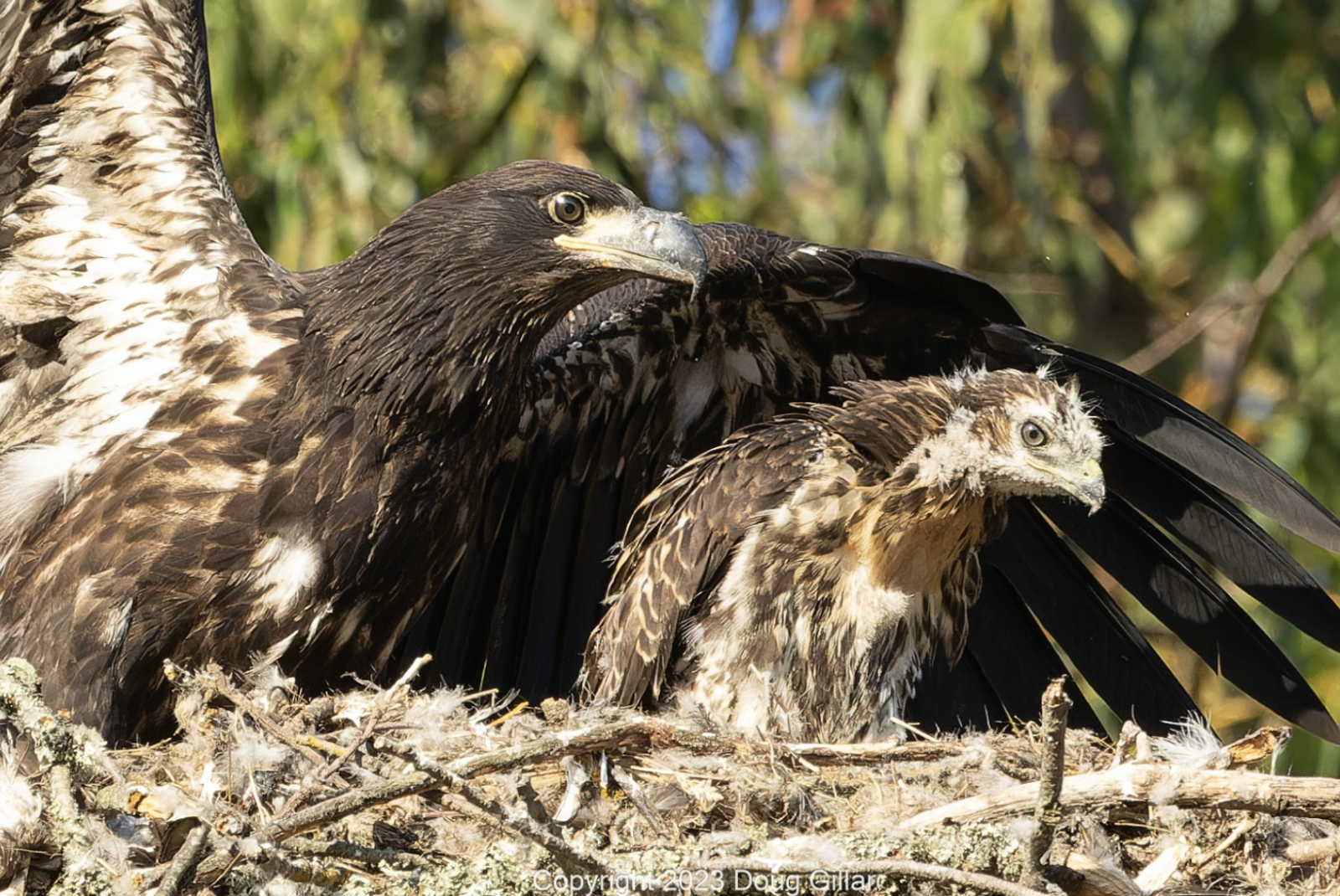
Bald eagles were hit hard by DDT; now their comeback makes them an Endangered Species Act poster species. But they are still considered endangered in California. They’re more populous in the northern half of the state and appear to be expanding their range, according to the U.S. Fish and Wildlife Service. Bay Nature in January reported on a pair of bald eagles building a nest in Alameda, the first such arrivals to the area in recent memory.
For Gillard, the hawks arrived serendipitously just before he began a four-week vacation, which he has basically spent on a near-daily Nest Watch. (When Bay Nature spoke with him yesterday, Gillard had just arrived from the nest, and was headed right back there after the call.) At least a dozen other birders have lately joined Gillard to watch the drama unfold. The birds appear to ignore the gawking humans, reports Gillard, who is more worried about cattle-ranching and a busy road nearby. He misses having the eagles mostly to himself, but says, “I knew this was so big I couldn’t be selfish about it.”
Gillard has not disclosed the location on social media, and has asked those in the know not to fly drones nearby. So far, “everybody’s been very, very nice,” he says.
Note, this is no sugar-sweet tale. On June 4, Gillard left two hawks and an eaglet in the nest. Two days later: one eaglet, one hawk. A local rancher reported seeing the male eagle fly in after a long day away from the nest, and then “feathers flying everywhere,” Gillard says. The smaller of the two redtails presumably had been torn to pieces and eaten.
Since then Tuffy has gotten a bit shy. “Whenever a big eagle comes, he runs to the back of the nest and hides, then comes back out to eat,” Gillard says. (Tuffy’s sex is not certain, he notes.) The female still feeds Tuffy, but she also sometimes pecks at or wing-beats her adoptee. Tuffy looks to be about a week away from fledging, and on Wednesday gave the watching birders below a scare by sitting on the nest’s edge and flapping, as though contemplating a jump. “Everyone was like, ‘No, you’re not ready!’ You can still see the shafts on the feathers,” Gillard says.
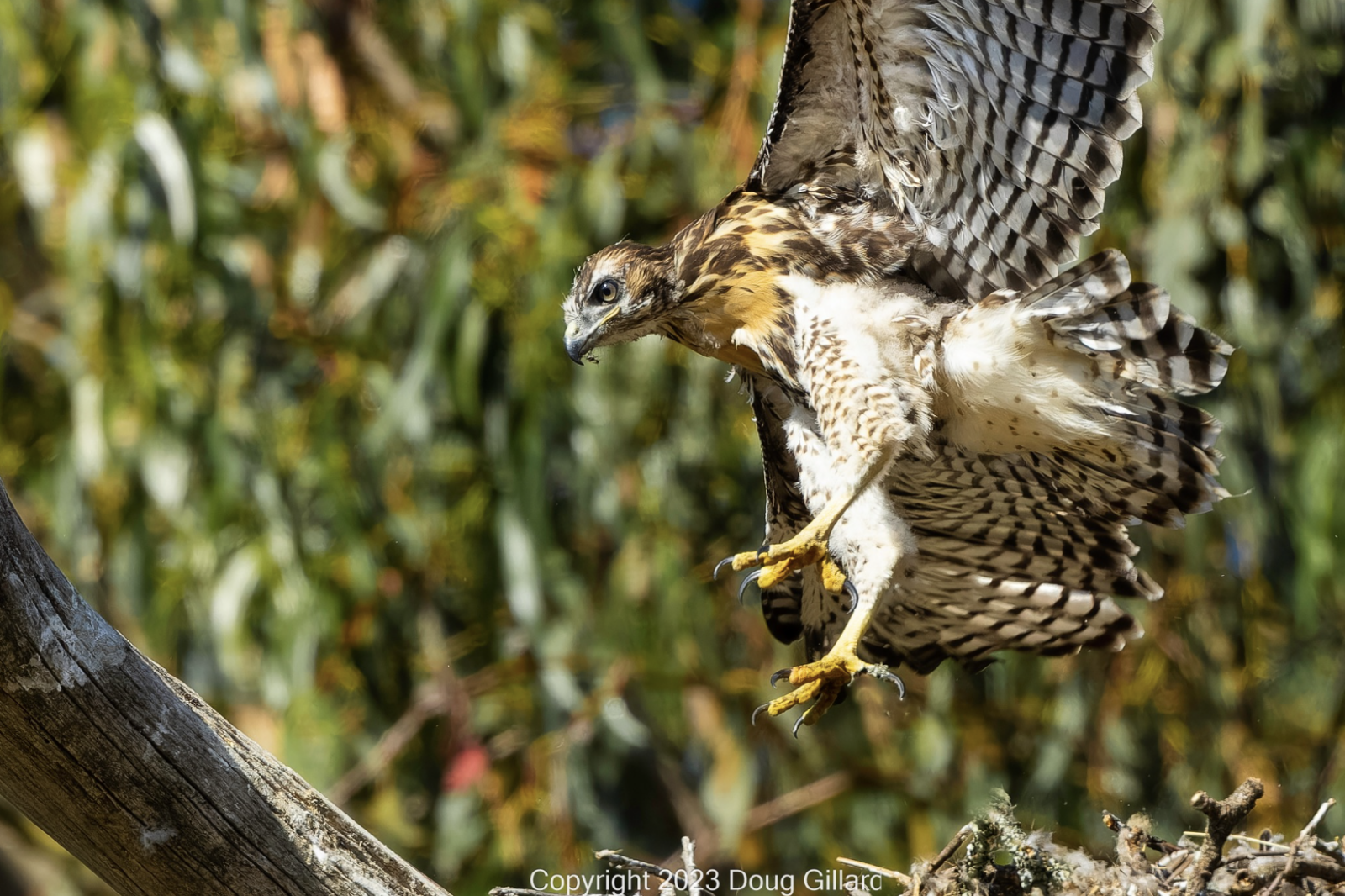
Meanwhile, eaglet Lola has fledged in the past few days. Gillard has reported her landing on perches that can’t hold her weight, crashing into trees, sleeping on the ground in a coyote-infested area, and generally acting like an eagle that does not yet know how to fly. The mother eagle has been bringing food back to the nest (perhaps in a gambit to lure Lola back to the nest), and Tuffy ate so much Tuesday he seemed “overloaded,” Gillard says.
In what was perhaps Lola’s first flight, Gillard witnessed her doing some rather fancy upside-down flying this week. She was defending herself from attack—by two red-tailed hawks.
